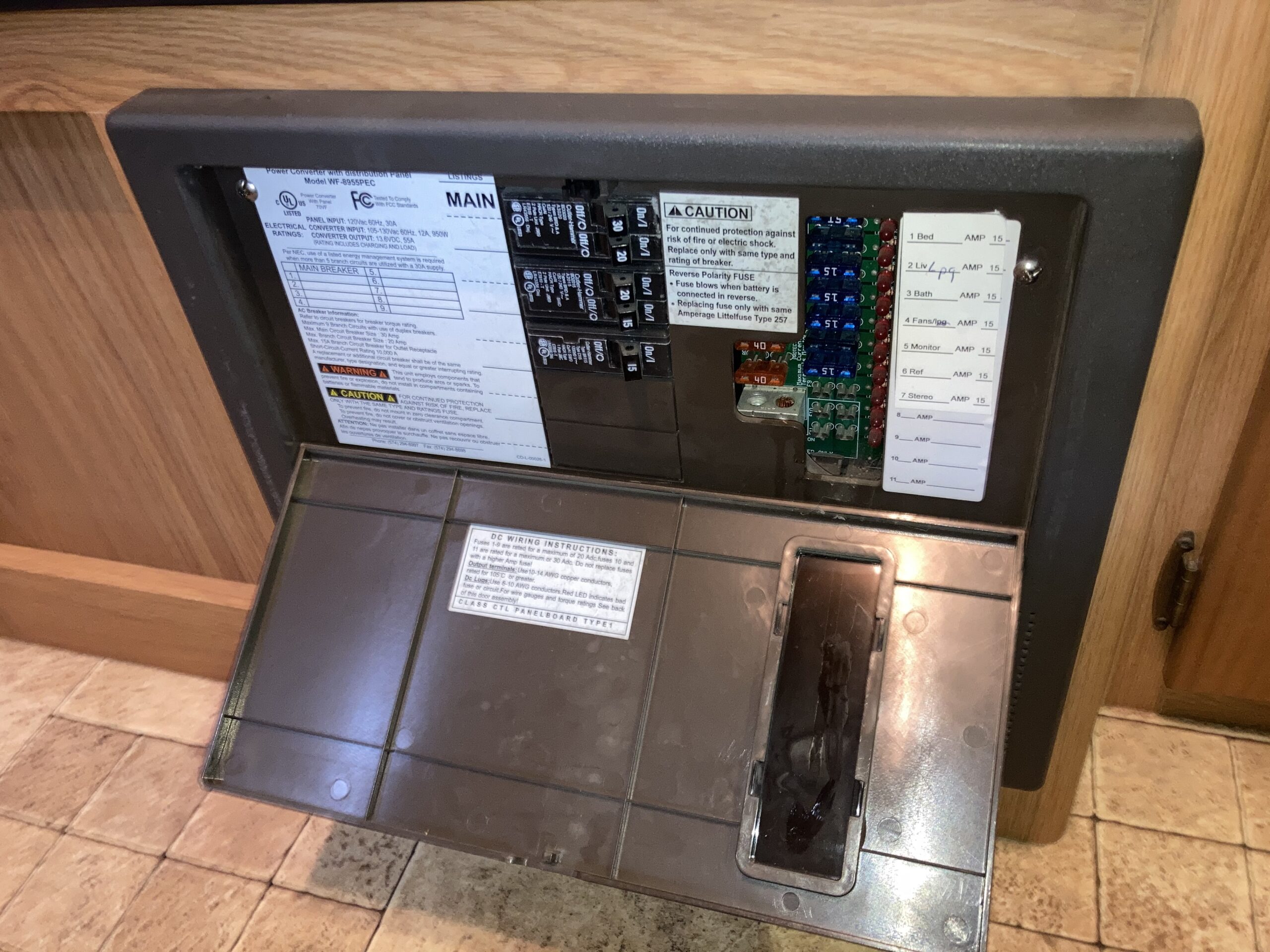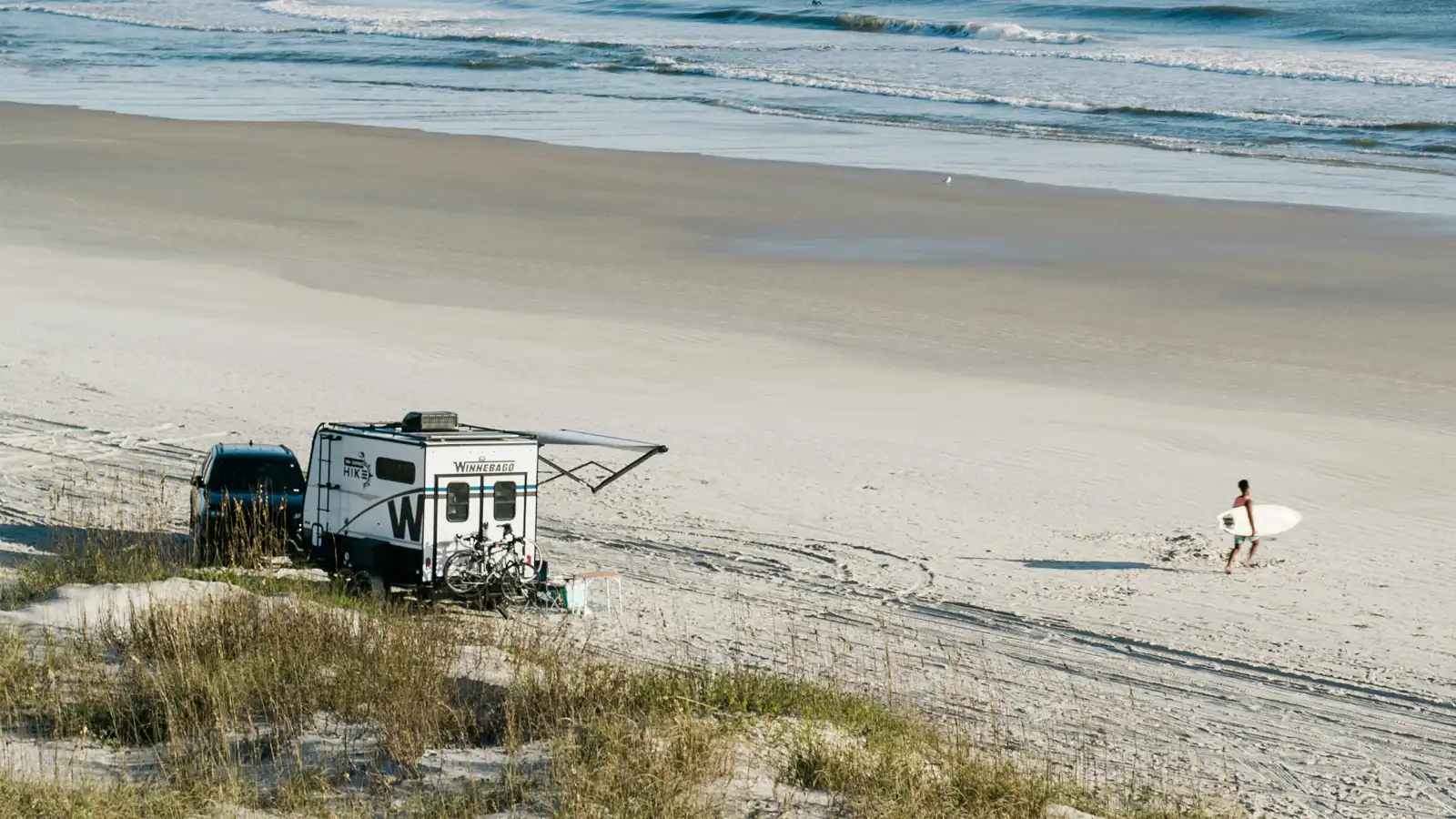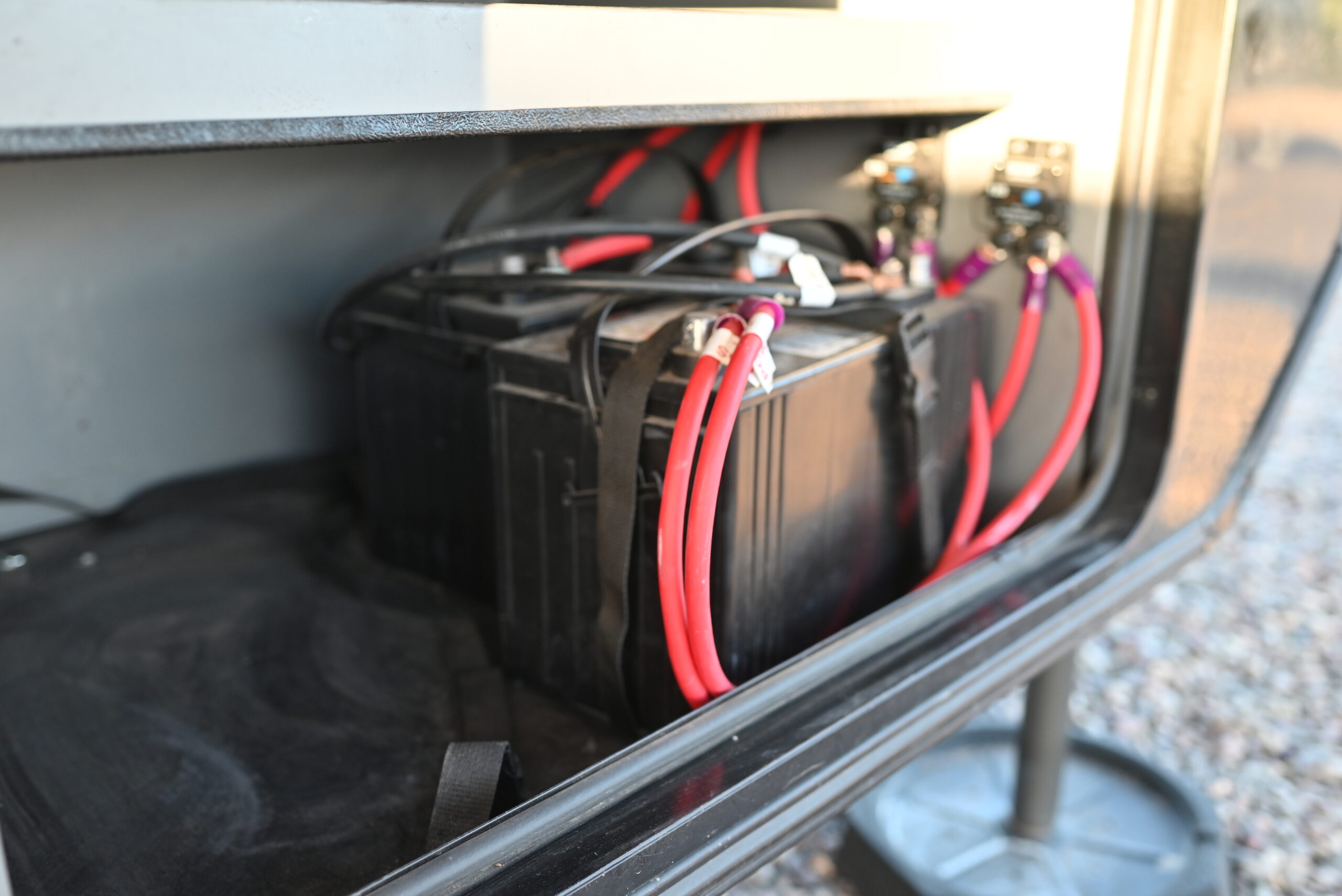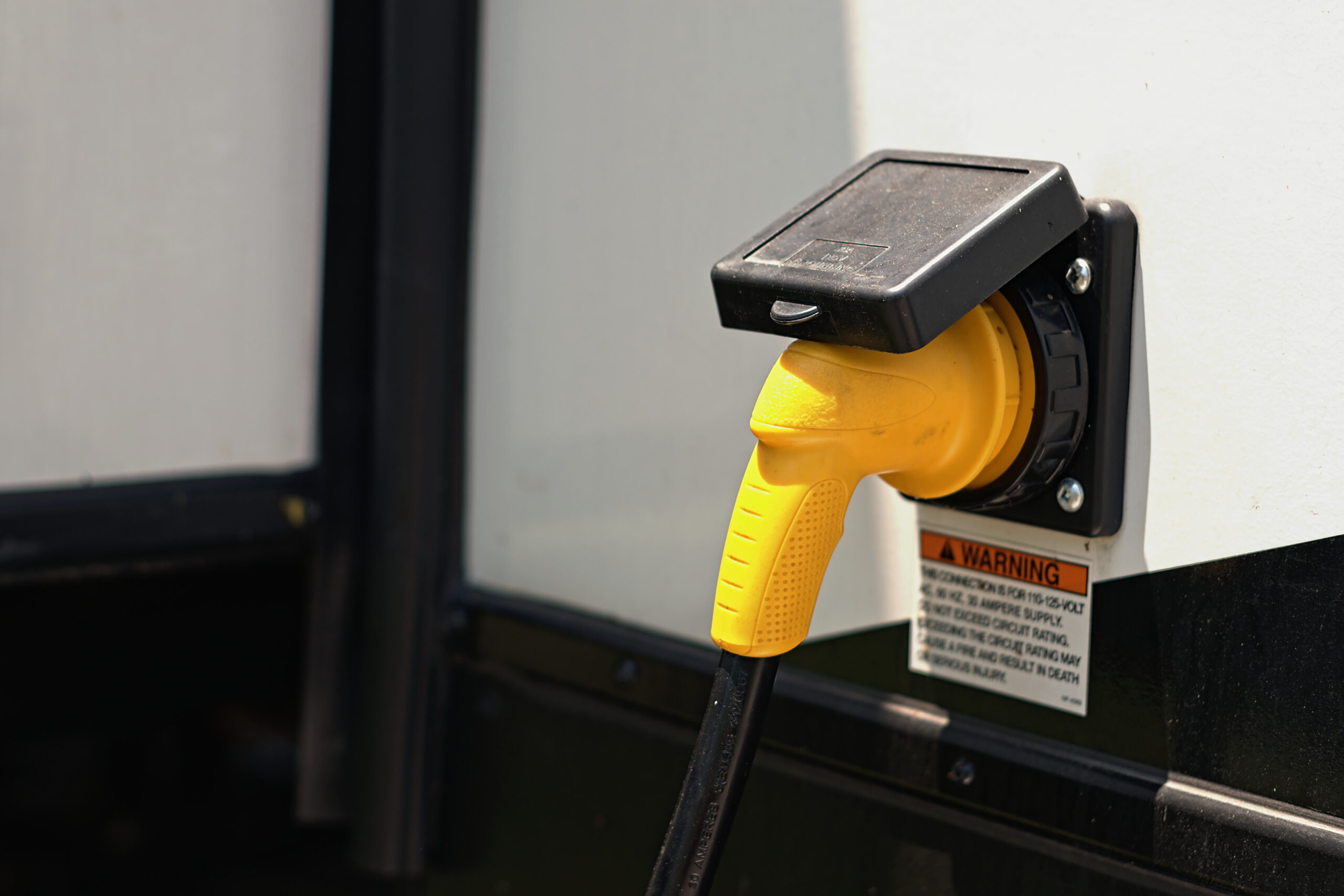
How to Maintain Your RV Power Converter and House Batteries
For most RVers, an RV power converter is an out of sight, out of mind part of their RV. It functions automatically, doesn’t really need periodic maintenance, and seldom fails.
However, it is very important to understand how it works and what it does to keep your RV operating seamlessly. Without a functioning converter you will likely be headed to the repair shop rather than the campground.
“Without a properly working power converter, RV appliances and electrical fixtures won’t run.” – Steve Froese blogging for Coach-Net
What is an RV power converter?
An RV power converter is better known to seasoned RVers as a converter / charger as it performs two important functions.
First, it converts household 120 volts AC (Alternating Current) to 12 volts DC (Direct Current) to power the 12 volt circuits in your RV. The 120 volts AC entering the converter can be either shore power or produced via an onboard or portable generator.
Secondly, it also directs DC power to charge your house battery(s). An RV power converter should not be confused with an inverter, which does just the opposite—inverting 12 volts DC from your batteries to 120 volts AC.
As noted above, an RV power converter, when connected to shore power or generator, supplies 12 volts DC to run the low voltage circuits in your RV which typically include all of the interior / exterior lights, circuit boards in most of the onboard appliances, the motor in the furnace, the water pump and other important functions.
Without a functioning converter, your house battery(s) would have to supply the power which can be quickly depleted with many 12-volt items operating in the RV. The second function of an RV power converter is to charge the house battery(s) when plugged into shore power or a generator producing 120 volts AC. Note that the charging portion of RV power converters is not created equally.
Dumb and smart chargers
There are single stage “dumb” chargers found in some new entry level RVs and many older RVs that charge at a set voltage (typically around 13.5 volts DC). The major problem with dumb chargers is they don’t charge at a higher rate (above 14 volts) when needed to fully charge a battery and they don’t reduce the voltage or fully “shut off” when the battery is charged. This can lead to overcharging or boiling of the battery, which shortens the life of the battery.
Fortunately, there are also three and four stage smart chargers that vary the rate of charge during the different stages of the battery charging process. Initially, they charge at a higher rate to quickly recharge a battery, then taper down the charge rate as the battery approaches full charge.
Once charged, it goes into what is known as “float” mode which keeps the house battery “topped off” without overcharging or boiling the battery and shortening its life.
Don’t be surprised if you hear a noise coming from your RV power converted either as both dumb and smart chargers have a temperature controlled cooling fan within them. The fan will kick on during warmer weather and/or when the RV power converter is working hard to supply power to the RV and/or charging the house battery(s).
Here is a short video for beginners outlining the 120 volt AC and 12 volt DC electrical systems of an RV with a good explanation on how RV power converters function between the two systems. The host has a dumb converter in his RV, but goes on to explain the importance of a quality multi-staged charger.
Now that you know what a RV power converter does, take the time to know where yours is located, the type and the charge rate (amps). The charge rate is especially useful in understanding the time needed to recharge your house battery(s) if you dry camp often.
Be sure to use an online tool such as RV LIFE Maintenance to keep track of all your RV maintenance in one place. Also check out our previous article on How To Determine Your RV Power Needs.



